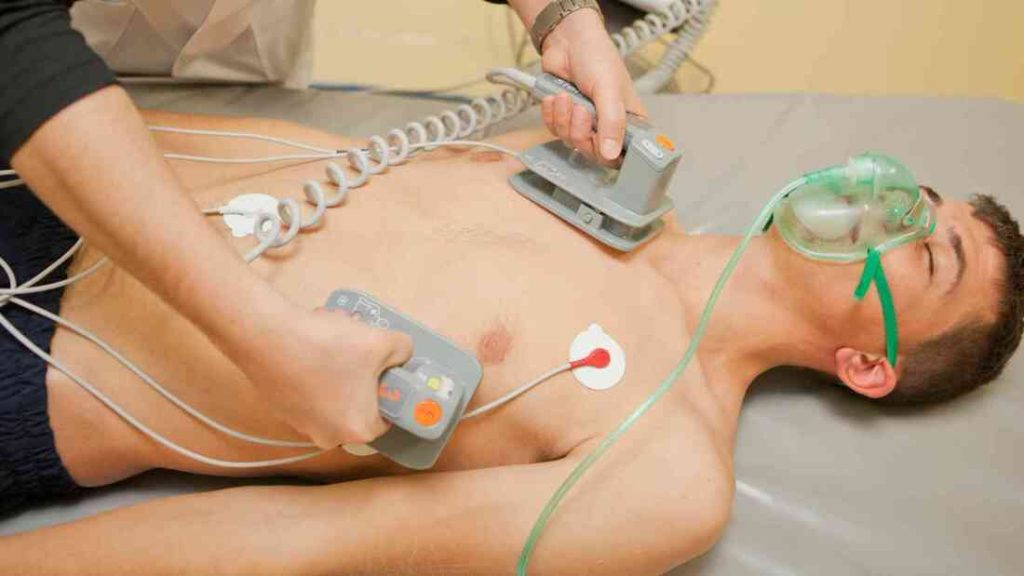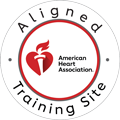Every minute counts—defibrillation within 3–5 minutes of collapse can increase survival rates by up to 70%. When it comes to sudden cardiac arrest (SCA), prompt action is crucial to saving lives. While heart disease and heart attacks are well-known medical emergencies, SCA is less understood yet equally, if not more, critical. For those who are prepared, knowing how to respond swiftly can make all the difference. In Kansas City, CPR Kansas City stands out as a leader in equipping individuals with essential life-saving skills, ensuring that more people are ready to face the unexpected and potentially save a life.

Understanding Sudden Cardiac Arrest (SCA)
Sudden cardiac arrest (SCA) is a sudden and unexpected loss of heart function, breathing, and consciousness. It happens when the heart’s electrical system malfunctions, disrupting its normal rhythm and causing it to stop beating effectively. This is distinct from a heart attack, which occurs when blood flow to the heart is blocked. SCA is often triggered by a malfunction in the heart’s electrical system, leading to arrhythmias, which are irregular heartbeats that can cause the heart to quiver or stop beating altogether. Without immediate treatment, the lack of blood flow to vital organs can result in death within minutes.
Understanding the heart’s electrical system is essential for grasping why SCA is so dangerous. The heart has a natural pacemaker, the sinoatrial (SA) node, which generates electrical signals to control the heart’s rhythm. When this system fails, arrhythmias like ventricular fibrillation (VF) or ventricular tachycardia (VT) can occur. These abnormal rhythms prevent the heart from pumping blood effectively, cutting off oxygen to the brain and other organs. Without rapid intervention, the chances of survival drop significantly with each passing minute, underscoring the importance of timely action.
Call Us Now
Get the Best CPR Class in Kansas City Today!
Defibrillation: The Game-Changer
What is Defibrillation?
Defibrillation is a life-saving procedure used to restore a normal heart rhythm in cases of cardiac arrhythmia. An automated external defibrillator (AED) delivers an electric shock to the heart, which can reset its electrical activity and potentially save a person’s life. AEDs are designed to be user-friendly, even for those without medical training, making them accessible in a wide range of public places such as gyms, airports, schools, and offices.
How an AED (Automated External Defibrillator) Works
The process of using an AED is straightforward. Once turned on, the device gives clear voice instructions to guide the user through the necessary steps, including placing electrode pads on the chest and ensuring no one is touching the person before delivering a shock. Modern AEDs are equipped with safety features to prevent accidental shocks and analyze the heart’s rhythm before delivering a shock, ensuring the procedure is both effective and safe. This accessibility and simplicity are what make AEDs essential tools in the fight against sudden cardiac arrest.
Defibrillation and CPR: A Powerful Combination
When used in combination with cardiopulmonary resuscitation (CPR), defibrillation becomes even more powerful. CPR helps maintain circulation and oxygen flow to the brain and other organs, buying precious time until defibrillation can be performed. The two techniques together significantly increase the likelihood of survival, highlighting why training in both CPR and AED use is essential.
Real-Life Impact of Defibrillation
The life-saving power of defibrillation is well-documented, with numerous stories and studies showing its effectiveness. For instance, consider the story of a high school athlete who collapsed on the field due to an arrhythmia. Thanks to quick-thinking coaches who had received CPR and AED training, they were able to use an AED and perform CPR until emergency medical personnel arrived. The athlete was revived and made a full recovery—a scenario that could have ended tragically without prompt intervention.
Statistics further reinforce the importance of defibrillation. Studies indicate that survival rates for SCA victims who receive immediate defibrillation can be as high as 70%. In contrast, the survival rate drops dramatically to less than 10% when defibrillation is delayed by even a few minutes. This stark difference illustrates why quick access to an AED and the willingness to use it is critical in life-or-death situations.
Empower Yourself with Training at CPR Kansas City
Being prepared to respond effectively to sudden cardiac arrest is a skill that everyone should strive to acquire. CPR Kansas City offers comprehensive training programs tailored for both healthcare professionals and the general public. Their hands-on classes emphasize not just the theoretical aspects of CPR and AED use but also practical, real-world applications. This training ensures that participants are confident and ready to act when faced with an emergency.
CPR Courses Offered
Courses at CPR Kansas City include Basic Life Support (BLS), Advanced Cardiovascular Life Support (ACLS), Pediatric Advanced Life Support (PALS), and standard CPR and First Aid. Each course is designed to provide participants with the knowledge and confidence to perform life-saving actions. The practical use of AEDs is integrated into training sessions, empowering individuals to use the devices effectively in emergencies.
You have the power to save a life—be ready to act. It only takes a few hours of training to be prepared to respond to sudden cardiac arrest with confidence. Signing up for a CPR Kansas City course could mean the difference between life and death for someone in need. Their expert instructors, engaging lessons, and hands-on approach make learning both effective and enjoyable.
Conclusion
Don’t wait until an emergency happens to learn these critical skills. Visit the CPR Kansas City website or contact them directly to enroll in a class today. Their convenient schedule and various course options make it easy to fit life-saving training into your busy life.
Defibrillation is not just a medical procedure; it is a crucial intervention that can save lives during sudden cardiac arrest. The combination of defibrillation and CPR significantly improves the chances of survival and recovery. Being trained in these life-saving techniques provides confidence and empowers you to act decisively when every second counts. Remember, your readiness can make the ultimate difference. Take the step today to equip yourself with the skills that could one day save a life.


